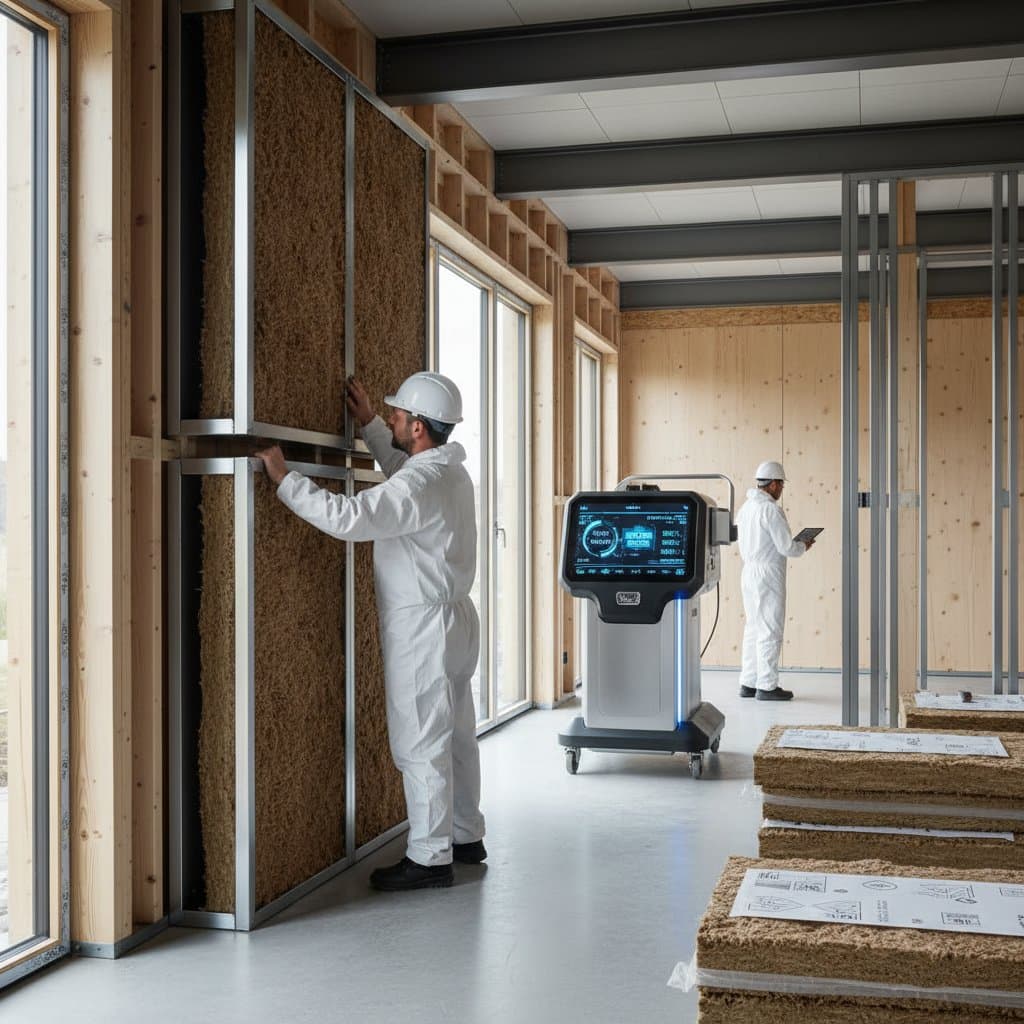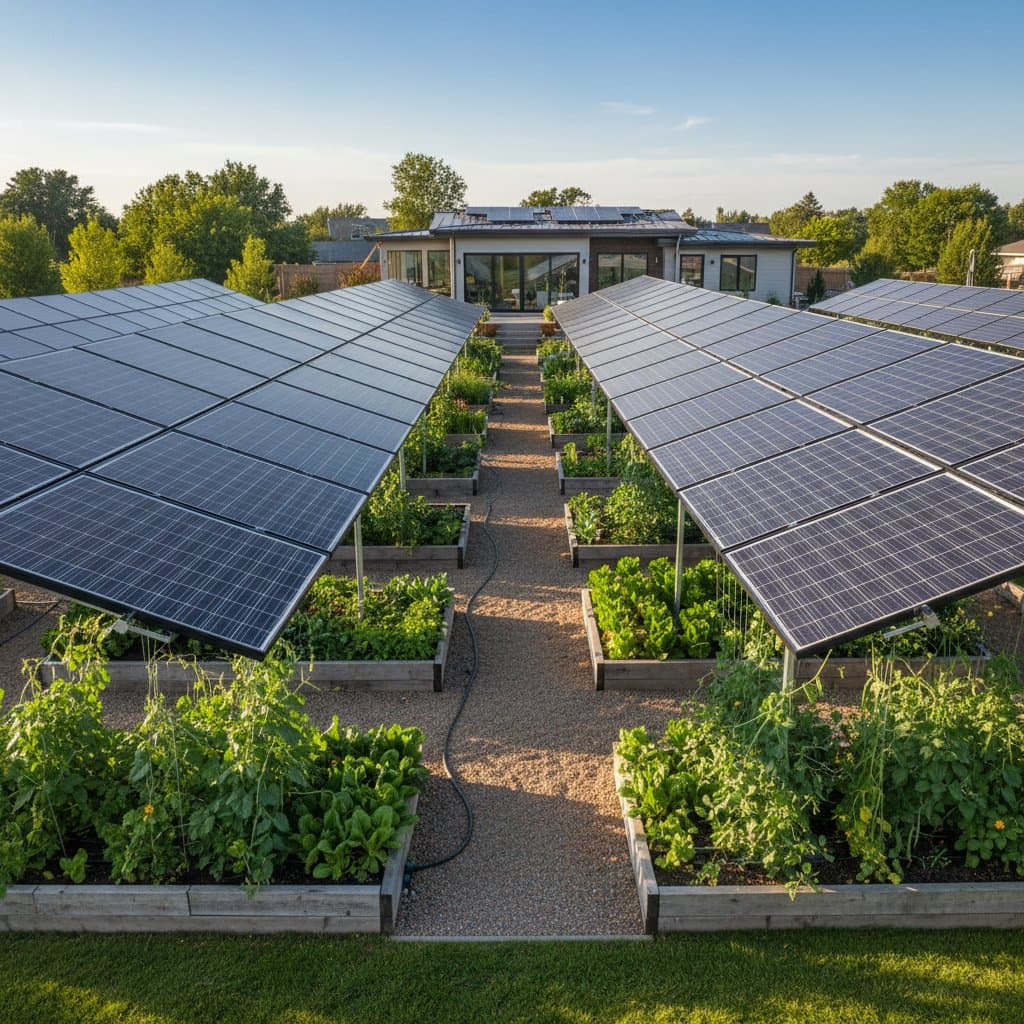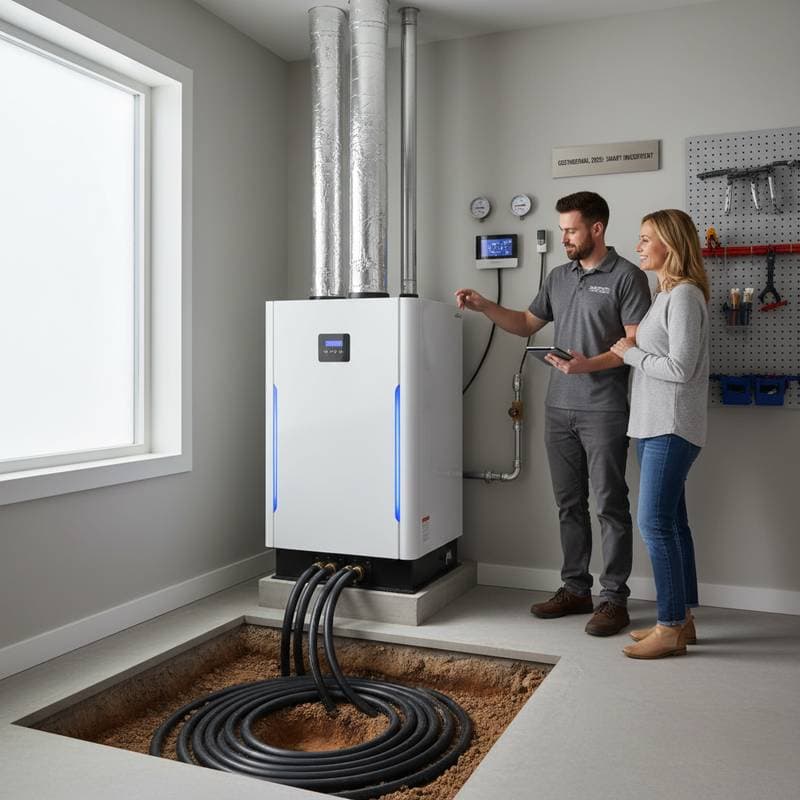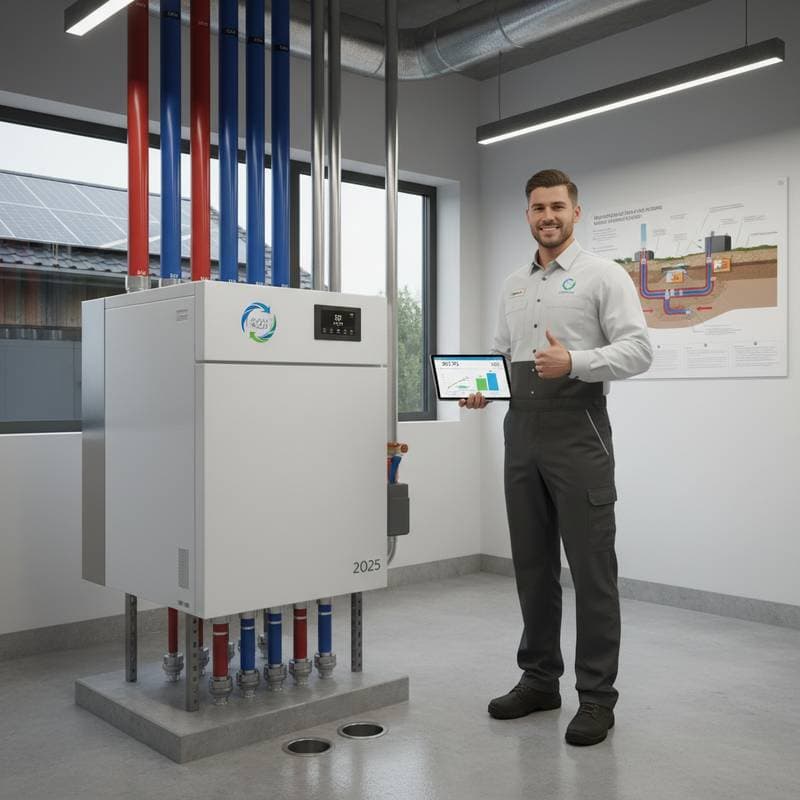Why Ground Source Heat Pumps Define Efficient Homes in 2025
Imagine a home equipped with systems that maintain ideal temperatures while minimizing energy use. Ground source heat pumps, also known as geothermal heat pumps, operate by leveraging the stable temperatures underground. This approach provides superior efficiency and sustainability, making these systems essential for homeowners focused on long-term energy management.
Essential Benefits
- Ground source heat pumps lower heating and cooling expenses by 40 to 70 percent relative to conventional systems.
- The technology exchanges heat with the earth, which holds steady temperatures throughout the year.
- Installation expenses typically fall between 15,000 and 35,000 dollars, with payback occurring in 7 to 10 years through savings.
- Indoor units last 25 years or longer, while underground components endure 50 years or more with proper care.
- Regional incentives often cover up to 30 percent of upfront costs through rebates and financing options.
The Growing Importance of Energy Efficiency
Homeowners face increasing energy prices and heightened environmental concerns, turning efficiency into an essential priority. Ground source heat pumps outperform most residential heating and cooling alternatives in performance.
Research from global energy organizations indicates that well-engineered systems achieve coefficients of performance (COPs) ranging from 3.5 to 5. This metric shows that each unit of electricity input yields 3.5 to 5 units of heating or cooling output. In contrast, standard furnaces operate at a COP near 0.9, resulting in energy loss rather than gain.
Such performance leads to meaningful financial benefits and less reliance on fossil fuels. Many users experience utility bill decreases of 50 percent or greater, influenced by home size and local rates.
Balancing Upfront Costs with Enduring Savings
Prospective owners frequently inquire about the financial commitment required for geothermal installations. The initial outlay covers excavation and loop placement, placing costs between 15,000 and 35,000 dollars for a typical residence, depending on site specifics.
Consider operating expenses and available support to understand the full picture. Expect monthly savings of 100 to 200 dollars on utilities, which, paired with tax credits or rebates, shortens the recovery period to levels comparable with other renewable installations.
Beyond immediate gains, these systems elevate property appeal. Market analyses reveal that geothermal-equipped homes command premium prices and attract buyers more quickly than those with standard setups. The predictable costs and low-maintenance design appeal to those seeking reliable, eco-friendly features.
Tailoring Installation to Your Property
Ground source heat pumps adapt to diverse climates and ground types with versatile setup options. The choice of loop type governs heat exchange efficiency with the earth.
Horizontal Loop Systems
Properties with ample yard space suit horizontal loops, placed 4 to 6 feet underground. These options prove more affordable to install, though they demand greater land use.
Vertical Loop Systems
Limited space calls for vertical loops, involving boreholes drilled 100 to 400 feet deep. Higher initial expenses yield benefits in surface area savings and reliable operation across soil variations.
Water-Based Loop Systems
Homes near ponds or lakes benefit from submerged coils in pond loops. Water facilitates superior heat transfer, often at reduced costs compared to land-based alternatives.
A professional site evaluation by qualified experts identifies the optimal loop type. Factors such as soil makeup, water table depth, and available area shape the recommended configuration.
Steps for Homeowners Exploring Geothermal Options
Evaluate these actions to prepare for a ground source heat pump installation and maximize outcomes.
-
Optimize Existing Efficiency
Address drafts, enhance insulation, and improve window performance prior to setup. These measures allow for a more compact system, lowering overall expenses. -
Select Qualified Professionals
Engage installers accredited by geothermal organizations. Accurate planning and execution ensure the system meets performance expectations. -
Investigate Financial Support
Research local rebates, favorable loans, or tax incentives for efficient technologies. Such programs substantially ease initial financial burdens. -
Evaluate Loop Configurations
Review horizontal, vertical, and water-based options in light of your site's characteristics and constraints. -
Focus on Investment Returns
Treat the project as a strategic upgrade for energy independence. The extended durability and cost reductions validate the commitment.
Advancing Toward Sustainable Home Energy
Ground source heat pumps align with the transition to reduced-carbon lifestyles. As power networks integrate more renewables, the technology's low-emission profile strengthens further. Operating on clean electricity renders home heating and cooling nearly carbon-neutral.
Design professionals and builders routinely incorporate geothermal solutions in new builds. These systems complement underfloor heating, solar integrations, and automated controls to deliver comfort with negligible waste. Upgrades to existing structures simplify through compact units and less invasive loop methods.
Steps to Integrate Geothermal Heating
Adopting a ground source heat pump secures financial stability against fluctuating energy markets. Residents enjoy consistent comfort across seasons while supporting reduced pollution and improved community health. For those prioritizing reliability and environmental impact, this technology provides exceptional, enduring performance.










